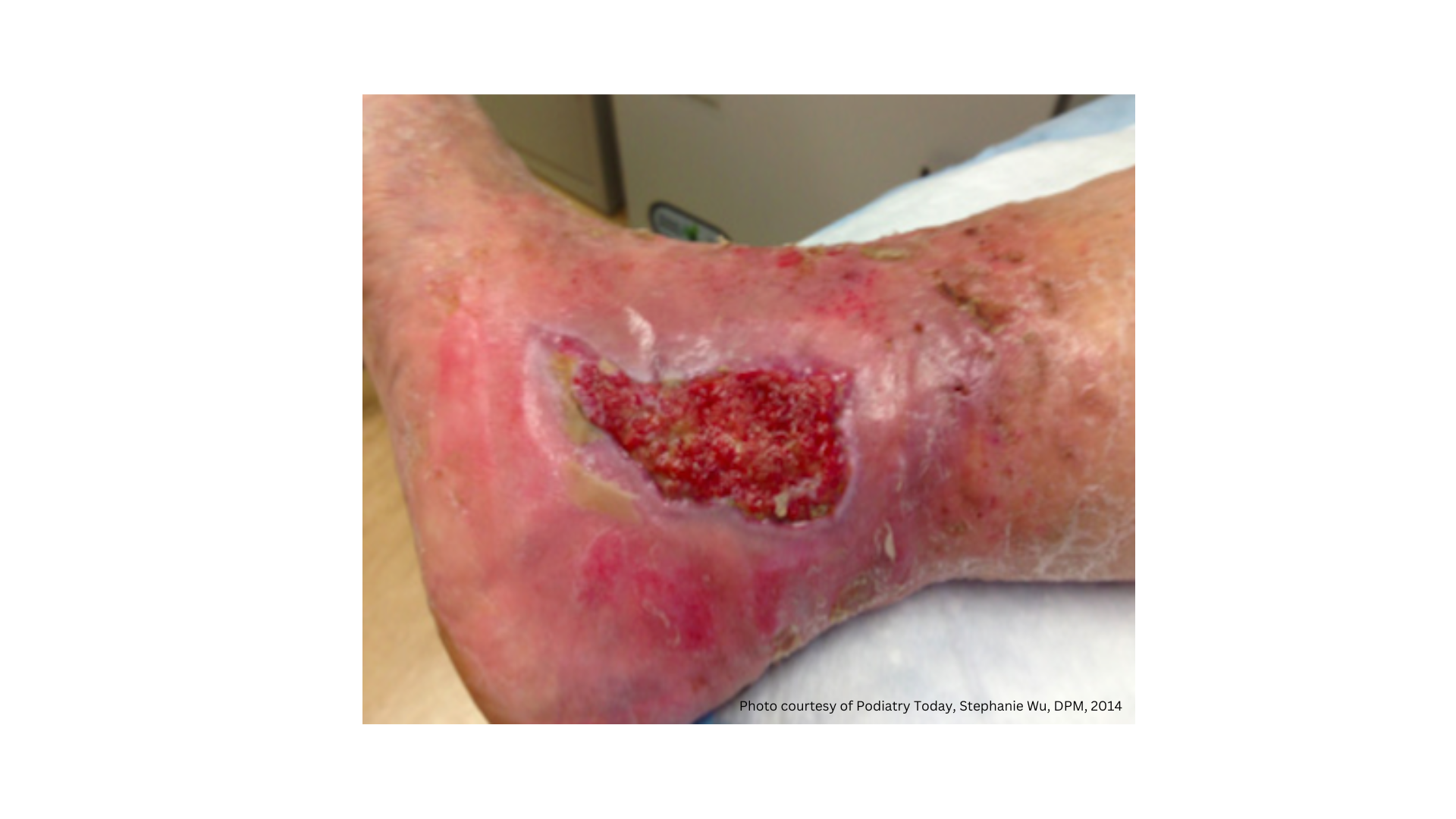Early Interventions for Limb Salvage
April 30, 2021
Approximately 2 million people in the United States are living with limb loss, and this figure is expected to double by 2050.1 Lower-limb amputation accounts for the vast majority of all amputations,1 and diabetes—specifically, diabetic foot ulcers (DFUs)—is the leading cause of nontraumatic lower-limb amputations in the US.2 Although already high, the rate of amputation is increasing. Minor diabetes-related amputations increased 62% between 2009 and 2015. The same period saw an increase of 29% in major nontraumatic lower-extremity amputations. These increases were most pronounced in young (18-44 years) and middle-aged (45-64 years) adults. Men also saw bigger increases than women.3
Factors Contributing to Lower-Limb Amputation
Many factors contribute to lower-limb amputation in individuals with diabetes, including:4
- Poor glucose control and vascular health over a period of years.
- Poor management of peripheral neuropathy and peripheral vascular disease.
- Poor management of foot wounds and ulcers, including by failing to offload.
- Poor healing capacity driven by poor vascular and autonomic function.
It is estimated that up to 80% of amputations could be prevented through diligent podiatry care strategies, which lower the risk of amputation, hospitalization, and reulceration.5
How much do you know about debridement and chronic wounds? Take our 10-question quiz to find out! Click here.
Interventions for Limb Salvage
Early intervention can be used as part of a limb salvage plan in an effort to prevent the progression of ulcers to the point where they require amputation. Early intervention strategies include the following:
Assessment: Early recognition and management of risk factors is essential for prevention of amputations.6 A podiatrist should perform regular and appropriate foot assessments for early identification of lesions that may become ulcerative. This prompt attention to minor injuries can decrease ulcer occurrence by 50% and in many instances eliminate the need for major amputation in nonischemic limbs.7
Controlling Diabetes: Managing blood sugar is the best way to prevent severe diabetes complications, including amputation. Insulin and other medications must be taken as directed. Patients with diabetes should regularly monitor their blood sugar levels and center their diet on healthy meats, vegetables, fruits, and whole grains.8
Debridement: Surgical sharp and conservative sharp debridement are part of the standard of care for diabetic ulcers that become more severe. By removing all necrotic and devitalized tissue that is impeding healing, debridement allows for healthy granulation tissue formation and reepithelialization. It is also essential for infection control given that devitalized tissue promotes bacterial proliferation and creates a physical barrier for antibiotics.9
Infection Control: Wound infection is a known predictor of amputation and poor healing. Treatment with antibiotics or antimicrobials when clinicially indicated in the presence of an infection is imperative to improve outcomes. If possible, a deep tissue culture via biopsy or curettage after debridement can help inform targeted antibiotic therapy.9
Dressings: Physicians commonly use hyaluronic products after debridement or surgery. These dressings consist of hydrofibers that prevent infection while maintaining a moist healing environment. Dressing changes should be minimized to reduce damage to tissue surrounding the wound, which may lead to inflammation and delay healing.10 Dressings that contain human growth factors can also be used for management of ulcers.9 Multiple interventions are often required throughout the care cycle for patients with DFUs in order to salvage a limb. Two of the biggest difficulties in accessing adequate treatment are obtaining a vascular consult and getting proper noninvasive imaging.11 Both of these activities delay the treatment process and can prevent timely interventions needed to salvage a limb. One way to minimize such delays is by having a multidisciplinary team manage patients with DFUs.
Conclusion
DFUs pose a huge risk for millions of patients with diabetes around the world. Amputation can have an extremely negative impact on quality of life for patients who must undergo the procedure. DFU management encompasses a broad range of clinical and patient-driven early interventions that can reduce the risk of amputation. The coordination of experts across a multidisciplinary team can improve the standard of care and ensure that appropriate interventions are implemented before it is too late. Following these best practices can enhance wound healing outcomes and minimize the risk of amputation.

References
1. Ahuja V, Thapa D, Ghai B. Strategies for prevention of lower limb post-amputation pain: A clinical narrative review. J Anaesthesiol Clin Pharmacol. 2018;34(4):439-449.
2. Boyko EJ, Seelig AD, Ahroni JH. Limb- and person-level risk factors for lower-limb amputation in the prospective Seattle diabetic foot study. Diabetes Care. 2018;41(4):891-898.
3. Geiss LS, Li Y, Hora I, Albright A, Rolka D, Gregg EW. Resurgence of diabetes-related nontraumatic lower-extremity amputation in the young and middle-aged adult US population. Diabetes Care. 2018;42(1):50-54.
4. Gurney JK, Stanley J, York S, Rosenbaum D, Sarfati D. Risk of lower limb amputation in a national prevalent cohort of patients with diabetes. Diabetologia. 2018;61(3):626-635.
5. Selvarajah D, Kar D, Khunti K, Davies AR, et al. Diabetic peripheral neuropathy: Advances in diagnosis and strategies for screening and early intervention. Lancet Diabetes Endocrinol. 2019;7(12):938-948.
6. Shojaiefard A, Khorgami Z, Larijani B. Independent risk factors for amputation in diabetic foot. Int J Diabetes Dev Ctries. 2008;28(2):32-37.
7. Alexiadou K, Doupis J. Management of diabetic foot ulcers. Diabetes Ther. 2012;3(1):4.
8. McDermott A. Why is foot care important if you have diabetes? Healthline. https://www.healthline.com/health/diabetes/diabetes-amputation. Updated Aug. 20, 2018. Accessed March 24, 2021.
9. Everett E, Mathioudakis N. Update on management of diabetic foot ulcers. Ann NY Acad Sci. 2018;1411(1):153-165.
10. Faroqi L, Guberman R, Humberto J, et al. A guide to current and emerging topical therapies for DFUs. Podiatry Today. 2018;31(6):36-41.
11. Nickinson ATO, Houghton JSM, Bridgwood B, et al. The utilisation of vascular limb salvage services in the assessment and management of chronic limb-threatening ischaemia and diabetic foot ulceration: A systematic review. Diabetes Metab Res Rev. 2020 Apr 21;e3326. Published online ahead of print (doi: 10.1002/dmrr.3326).
The views and opinions expressed in this content are solely those of the contributor, and do not represent the views of WoundSource, HMP Global, its affiliates, or subsidiary companies.











